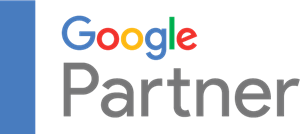As the demand for innovative and flexible online solutions grows, it’s worth taking a look at tools that facilitate the process. One such tool is Drupal, a powerful content management system that is gaining popularity among web developers and businesses. In this article, we’ll learn why you should learn about Drupal and the benefits it can bring to your online project work.

Zarabiaj więcej dzięki optymalizacji marketingu internetowego
Przygotuję strategię działania i razem z moim zespołem wdrożę ją dla Ciebie.
What is drupal and where did it come from?
Drupal is an open source software that is used to create, manage and publish content on websites. It is a content management system (CMS) that allows users to easily create and manage websites without deep programming experience.
Drupal is free and available under an open source license, meaning that its source code is publicly available and can be modified and customized by the development community.
Drupal was created by a Belgian, Dries Buytaert, who began its development in 2000. The first version of the system was released to the public in 2001. The name “Drupal” comes from the Dutch word “druppel,” which means “droplet.” The name is a reference to the fable of Drupal, which tells of a dragon who had an obsessive tendency to copy things, just as the Drupal system copied and shared content.
Drupal is known for its flexibility and scalability. It can be used to create a variety of websites, from small blogs to large news portals and online stores. The system offers an extensive community and many available modules and plug-ins to customize and extend its functionality.
Drupal has gained popularity among developers, companies and organizations for its customizability and advanced content management features. Today, the system is used by thousands of sites around the world, including such well-known brands as NASA, Tesla, the BBC, Harvard University, and government organizations.
Drupal how to get started? Step-by-step installation
Drupal is a powerful content management system ( CMS ) that offers many possibilities for creating a variety of websites. If you want to get started with Drupal, here’s a step-by-step guide on how to do it:
- Download Drupal: Start by downloading the latest version of Drupal from the official website, available at: https://www.drupal.org/download. Choose the right version according to your needs.
- Transfer the files to the server: After downloading the Drupal files, you will need to transfer them to your hosting server. You can do this using the FTP (File Transfer Protocol) program. Make sure you have access to the server where you want to install Drupal.
- Create a MySQL database: Before you proceed with the installation, you need to create a MySQL database that Drupal will use to store content and settings. Usually in the hosting administration panel you will find an option to create a new database. Save yourself the database data, such as the database name, user and password.
- Start the installation: Now that the Drupal files are on the server, open a web browser and go to your server’s website (e.g. http://twojadomena.com). The Drupal installer should start automatically. If not, find the installation directory on the server (usually named install or installation) and navigate to it manually.
- Configure Installation: The installer will guide you through the configuration process. At the first stage, enter the database data you created earlier (database name, user, password). Then follow the installer’s instructions, adjusting the settings according to your preferences.
- Complete the installation: Once the installation process is complete, log in to your Drupal dashboard using the access credentials you established during setup.
- Optimize your site: Now that you have your Drupal site installed, you can start optimizing it for your needs. You can customize the look and functionality of the site, install modules, create content and adjust settings.
This is a brief guide on how to get started with Drupal. It’s a powerful tool that offers a lot of possibilities, so take the time to familiarize yourself with its functionality and customize it for your own purposes.
Gotowy na rozwój?
Advantages and disadvantages of Drupal
Drupal advantages:
- Flexibility and scalability: Drupal is an extremely flexible system that can be customized for different types of websites, from simple blogs to large news portals and online stores. Scalability allows the site to grow as needs increase.
- Open source: Drupal is based on an open source license, which means that its source code is publicly available and can be modified, customized and developed by the development community. This makes it economical and flexible.
- Large community and support: Drupal has an active community of users and developers, which means there is a lot of educational material, plugins and modules available. You can also count on support from the community in case of problems.
- Security: Drupal is known for its robust security and access control system. Regular updates are released to improve system security.
- Multilingualism: Drupal has built-in tools to support multiple languages, making it easy to create multilingual sites.
- Modules and plugins: There are many available modules and plugins that allow you to extend Drupal’s functionality with various elements, such as e-commerce, discussion forums, social media integrations and much more.
Drupal Disadvantages:
- Complicated initial learning process: For those who are inexperienced in the field of programming or CMS, Drupal can be difficult to master. The process of setting up and customizing the site can take time and effort.
- Hardware requirements: For large and extensive sites, Drupal may require a suitably strong server and resources, which may affect hosting costs.
- Updates: While updates are important for system security, they can be time-consuming and complicated, especially if your site uses multiple modules.
- Small number of specialists: Compared to some other popular CMS, Drupal has a smaller community and fewer available specialists, which can be a problem if you need technical support.
- Technical Support and Paid Support: For more advanced problems or support needs, you may need to use paid technical support services.
Summary
Drupal has many advantages. Its flexibility, scalability and community support make it an excellent choice for projects of varying scope and complexity. With Drupal, we can create websites that not only look attractive, but are also easy to manage and develop. It’s a tool that opens the door to creative online design and effective content management. That’s why it’s a good idea to learn about Drupal and realize its potential when working on your own web projects.
Looking for the best system for you to create a website or online store? I will be happy to advise you on what will work best for your business!


















